#dinornis novaezealandiae
Text




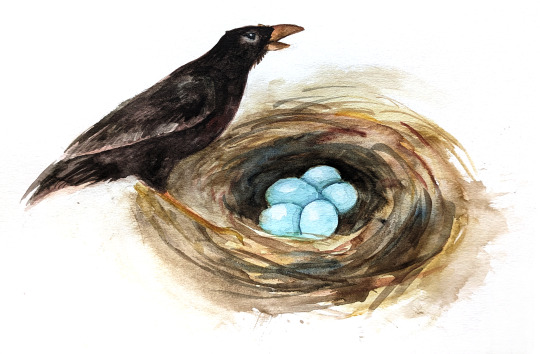
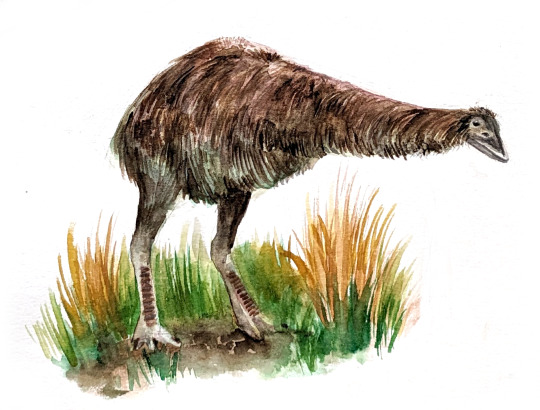
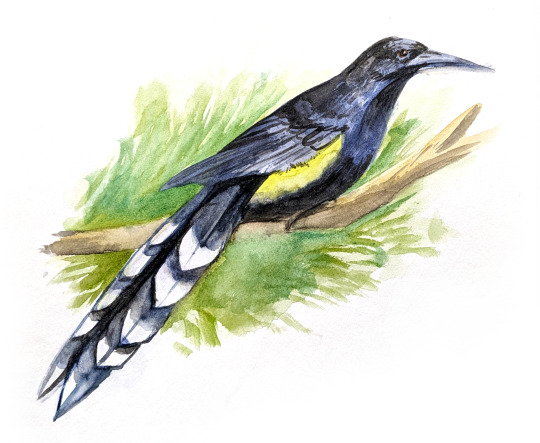
Oh, extinct birds, how I love you and miss you.
In order:
White swamphen (Porphyrio albus), native to Lord Howe Island
Huia (Heteralocha acutirostris), native to Aotearoa New Zealand
Dodo (Raphus cucullatus), native to Mauritius
Laughing owl (Ninox albifacies), native to Aotearoa New Zealand
Mysterious starling (Aplonis mavornata), native to Mauke
North Island giant moa (Dinornis novaezealandiae), native to Aotearoa New Zealand
O'ahu 'ō'ō (Moho apicalis), native to O'ahu
[Image IDs in alt text.]
#extinction#extinct animals#extinct birds#watercolor#scientific illustration#white swamphen#huia#dodo#laughing owl#mysterious starling#giant moa#'o'o#artaneae
159 notes
·
View notes
Text



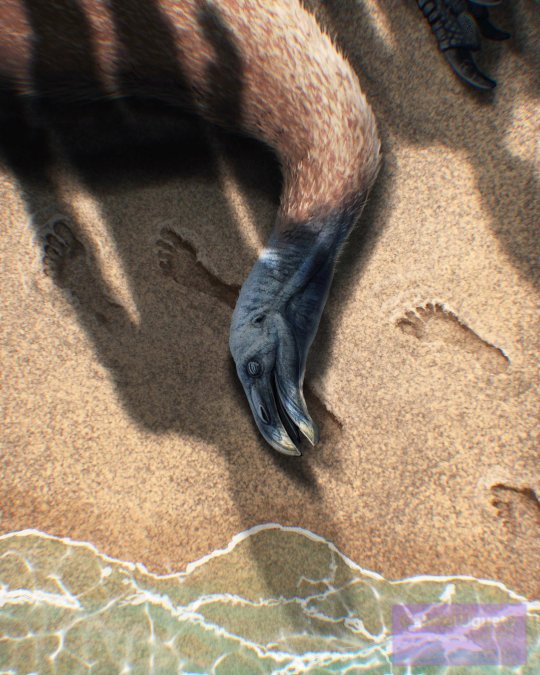

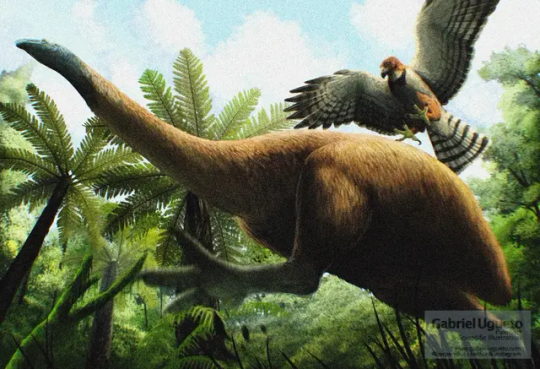
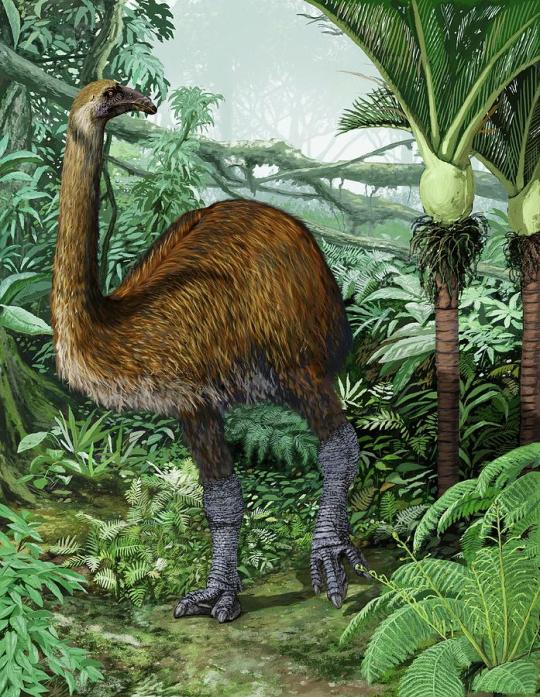
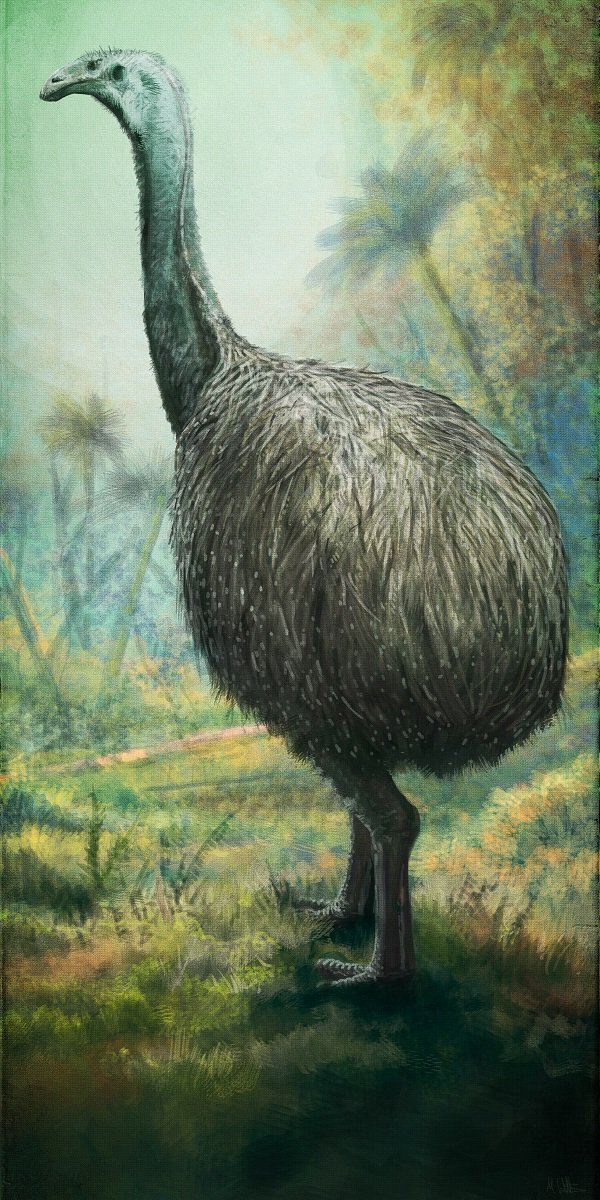
Dinornis better known as the Giant Moa is an extinct genus of birds belonging to the moa family of the suborder order Dinornithiformes, a group of large flightless birds which lived on the islands of New Zealand some 2 million to 500 years ago. There are 2 currently recognized species the North Island giant moa (Dinornis novaezealandiae) and the South Island giant moa (Dinornis robustus). These diurnal avians tended to be found in the lowlands of there island homes inhabiting Shrublands, Grasslands, Coastlands, and Forests where they occupied the niche of large terrestrial browsing herbivore similar to certain antelope, bovines, cervids, and giraffes of today, feeding upon Twigs, seeds, berries, leaves, flowers, fungi, vines, herbs, and shrubs. In life giant moas displayed a large reversed sexual dimorphism whereby the females were up to twice the size of males. With males reaching around 5 to 6.5ft (1.52 to 1.98m) in height and 120 to 195 (55 to 88kg) in weight, and females reaching roughly 10 to 12.5ft (3.05 to 3.81m) in height and 170 to 550lbs (78 to 250kgs) in weight these birds where amongst the largest to ever exist, with the North Island Giant Moa currently holding the record of the tallest bird ever and the South Island Giant Moa being the second tallest. However both are beaten in terms of weight by there fellow recently extinct ratite the elephant bird. Dinornis had long slim, elongated bones compared to other moa species, Maori historical accounts describe the animals as tall, two legged, tailess, wingless giants with slender necks. Brown, slightly streaked, downy, wool like feathers covered all of there bodies sans there heads, feet, and part of the neck. It is believed that the settlement of New Zealand by the Maori directly lead to the Moas extinction, as they were extensively hunted for there meat and feathers. Whats possibly more devastating was the introduction of Polynesian rats and dogs which likely destroyed moa nests and killed moa chicks faster than these large birds could mature and reproduce.The last of the giant moa likely died out around 1500 C.E. with the last species of smaller Moa the Upland Moa possibly holding out until the 1800s.
Art used belongs to the following creators:
Giova Favazzi
Mark Witton
Jaime Chirinos
Gabriel N. U.
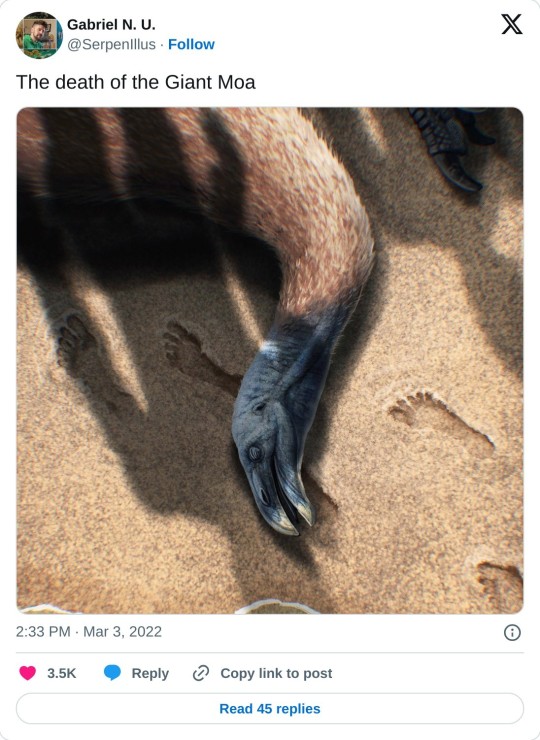
Dana Franklin
#pleistocene pride#pleistocene#pliestocene pride#cenozoic#ice age#stone age#pliestocene#bird#dinosaur#giant moa#moa#new zealand#extinct
8 notes
·
View notes
Text

Me at Auckland museum with the North Island giant moa skeleton, a lorge boye. Also feat. bust of English dude Sir Richard Owen who was the first European to correctly identify a moa fossil (their existence and extinction was already widely known by Māori).
#selfie#me#girlslikeus#moa#dinornis#dinornis novaezealandiae#gothgoth#him tol#skeleton#femme#transisbeautiful#amab - all moa are beautiful#wlw#Richard Owen#museum#North Island giant moa#Auckland museum
23 notes
·
View notes
Photo

Dinornis robustus
Pleistocene - Holocene
South Island, New Zealand
Height: 3.5 m
The South Island moa might have been the tallest bird that ever lived. Females were much larger than males. The moas are believed to have been driven to extinction by humans as they reached New Zealand around 1300 AD. The feathers were hair-like and reddish brown. The species D. novaezealandiae from the North Island was a bit smaller.
illustration by Nobu Tamura
(via: Spinops - Nobu Tamura)
24 notes
·
View notes
Photo

Dinornis novaezealandiae
(North Island giant moa)
Extinct Late Middle Ages
#watercolour#ink#gouache#moa#Dinornis novaezealandiae#dinornithidae#New Zealand#extinct#Holocene#gallery
26 notes
·
View notes